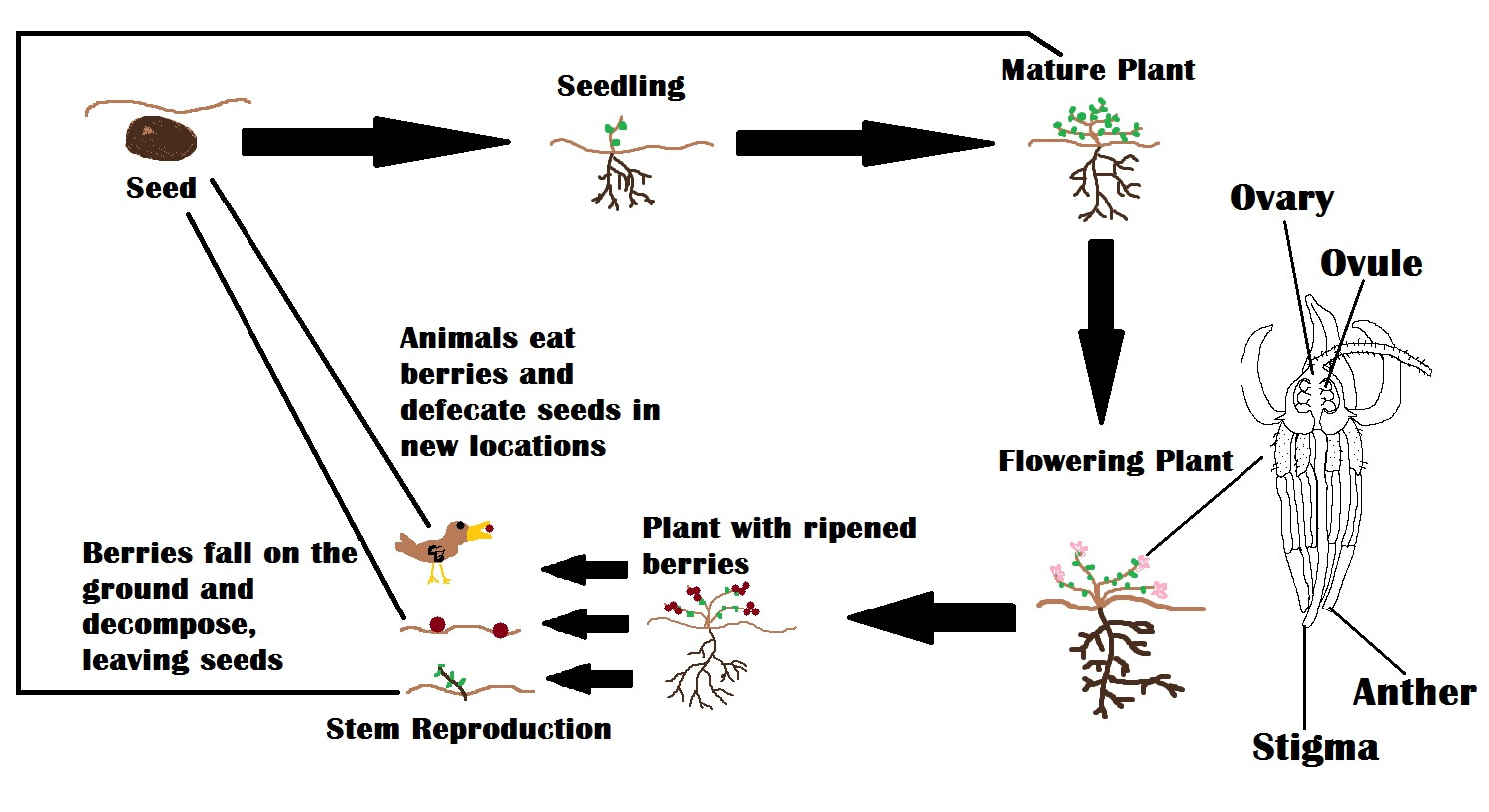“I will survive” is a true saying for the cranberry. The cranberry lives year round. They survive through the cold winters, sweltering summers, and cool springs and falls.
 The cranberry starts out as a seed on the bog and with the right conditions will take root and start to grow. This usually occurs in the fall, from September to November, or in the spring, around April 15th and May 31st. The plant will soon pop out of the earth as a seedling and will begin to photosynthesize. Over the days, the plant will grow bigger and bigger. It will take almost a year before the plant is mature enough to start reproducing.
The cranberry starts out as a seed on the bog and with the right conditions will take root and start to grow. This usually occurs in the fall, from September to November, or in the spring, around April 15th and May 31st. The plant will soon pop out of the earth as a seedling and will begin to photosynthesize. Over the days, the plant will grow bigger and bigger. It will take almost a year before the plant is mature enough to start reproducing.
The cranberry will make flowers. The flower contains male and female sex organs. The male sex organ is called the anther and will create sperm that is carried inside pollen. There are many parts to the female sex organ, including the stigma, ovary, and ovule. The ovule holds the egg. After a couple of days, the anther will burst with pollen, and the eggs will be ready to for fertilization. But, the cranberry wants to avoid self-fertilization, and so a rusty-patched bumble bee comes flying along to find some nectar. As the bee walks upon the flower, his legs, body, and wings get covered in pollen. He soon flies off in search of more flowers, and soon he finds another cranberry flower.
As he wanders upon this flower, some of the pollen sticks to the stigma. From here, the pollen travels down the long tube of the stigma into the ovary, which contains the ovules. In each ovule, there is an egg. It is very rare for every egg to get fertilized, but the ones that do will soon start to develop. Soon the growing berries will become too much for the ovary to handle, and it will burst open, exposing the berries to the outside. But, the berries have now grown an outer layer to protect them from the outside and they will continue to grow.
 When the berries are ripe, many animals will eat them. The stomachs of many animals cannot digest the seeds of the berries, so they will pass through the digestive system, and eventually end up in the ground again. If conditions are right, the seeds will start developing into new plants. Other berries may fall to the ground, decompose, and again the seeds will be in the ground and able to start developing if conditions are right. As I stated in the adaptations section, cranberries have the ability to use stem reproduction. If any stems are in any way inserted into the ground, they can take root and start developing.
When the berries are ripe, many animals will eat them. The stomachs of many animals cannot digest the seeds of the berries, so they will pass through the digestive system, and eventually end up in the ground again. If conditions are right, the seeds will start developing into new plants. Other berries may fall to the ground, decompose, and again the seeds will be in the ground and able to start developing if conditions are right. As I stated in the adaptations section, cranberries have the ability to use stem reproduction. If any stems are in any way inserted into the ground, they can take root and start developing.
To learn about the interactions of the cranberry, click here.
Copyright Britney Mullenbach – Last updated 4/16/2011
